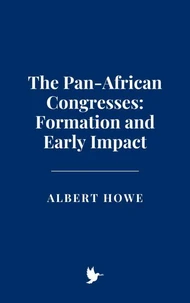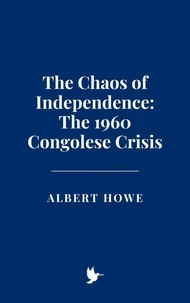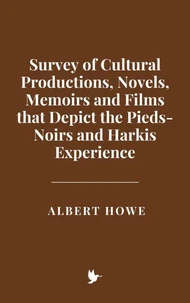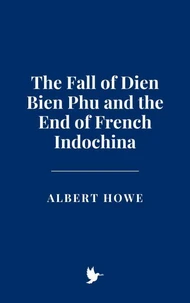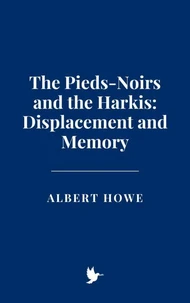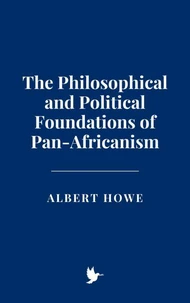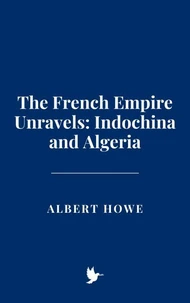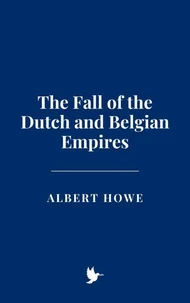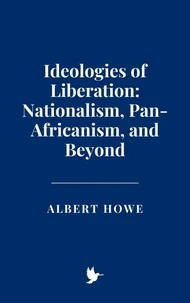History of the Catholic University of America (CUA)
Par :Formats :
Disponible dans votre compte client Decitre ou Furet du Nord dès validation de votre commande. Le format ePub est :
- Compatible avec une lecture sur My Vivlio (smartphone, tablette, ordinateur)
- Compatible avec une lecture sur liseuses Vivlio
- Pour les liseuses autres que Vivlio, vous devez utiliser le logiciel Adobe Digital Edition. Non compatible avec la lecture sur les liseuses Kindle, Remarkable et Sony
 , qui est-ce ?
, qui est-ce ?Notre partenaire de plateforme de lecture numérique où vous retrouverez l'ensemble de vos ebooks gratuitement
Pour en savoir plus sur nos ebooks, consultez notre aide en ligne ici
- FormatePub
- ISBN8224528042
- EAN9798224528042
- Date de parution17/01/2025
- Protection num.pas de protection
- Infos supplémentairesepub
- ÉditeurVirtued Press
Résumé
The Catholic University of America, founded in 1887 and formally opened in 1889, stands as a testament to the dynamic interplay of faith, intellect, and culture in American history. As the only institution of higher education established by the U. S. Catholic bishops and directly approved by the Vatican, its origins are steeped in the ambitions and complexities of the Catholic Church's mission in the New World.
The decision to establish a national university, rooted in the Catholic intellectual tradition, was more than a strategic move to enhance education-it was a declaration of cultural and spiritual identity. The University's history is inseparable from the broader narrative of Catholicism in America, which evolved from a marginalized minority in a predominantly Protestant society to a vital and influential force in the nation's development.
The idea of a Catholic university in the United States can be traced back to the early 19th century, when the Catholic Church was navigating the challenges of integrating into a democratic, pluralistic society. Figures such as John Carroll, the first Catholic bishop in the United States, laid the groundwork for a uniquely American Catholic ethos. Carroll's vision for a learned clergy and educated laity inspired the establishment of seminaries and schools, but it wasn't until the late 19th century that the Church had the resources and confidence to undertake such an ambitious project as a national university.
The Second Plenary Council of Baltimore in 1866 first articulated the need for a central institution to unify Catholic education in the United States. This aspiration was solidified during the Third Plenary Council of Baltimore in 1884, where the bishops formally resolved to create the Catholic University of America, to serve as a hub for theological research and a beacon of Catholic thought.
The decision to establish a national university, rooted in the Catholic intellectual tradition, was more than a strategic move to enhance education-it was a declaration of cultural and spiritual identity. The University's history is inseparable from the broader narrative of Catholicism in America, which evolved from a marginalized minority in a predominantly Protestant society to a vital and influential force in the nation's development.
The idea of a Catholic university in the United States can be traced back to the early 19th century, when the Catholic Church was navigating the challenges of integrating into a democratic, pluralistic society. Figures such as John Carroll, the first Catholic bishop in the United States, laid the groundwork for a uniquely American Catholic ethos. Carroll's vision for a learned clergy and educated laity inspired the establishment of seminaries and schools, but it wasn't until the late 19th century that the Church had the resources and confidence to undertake such an ambitious project as a national university.
The Second Plenary Council of Baltimore in 1866 first articulated the need for a central institution to unify Catholic education in the United States. This aspiration was solidified during the Third Plenary Council of Baltimore in 1884, where the bishops formally resolved to create the Catholic University of America, to serve as a hub for theological research and a beacon of Catholic thought.
The Catholic University of America, founded in 1887 and formally opened in 1889, stands as a testament to the dynamic interplay of faith, intellect, and culture in American history. As the only institution of higher education established by the U. S. Catholic bishops and directly approved by the Vatican, its origins are steeped in the ambitions and complexities of the Catholic Church's mission in the New World.
The decision to establish a national university, rooted in the Catholic intellectual tradition, was more than a strategic move to enhance education-it was a declaration of cultural and spiritual identity. The University's history is inseparable from the broader narrative of Catholicism in America, which evolved from a marginalized minority in a predominantly Protestant society to a vital and influential force in the nation's development.
The idea of a Catholic university in the United States can be traced back to the early 19th century, when the Catholic Church was navigating the challenges of integrating into a democratic, pluralistic society. Figures such as John Carroll, the first Catholic bishop in the United States, laid the groundwork for a uniquely American Catholic ethos. Carroll's vision for a learned clergy and educated laity inspired the establishment of seminaries and schools, but it wasn't until the late 19th century that the Church had the resources and confidence to undertake such an ambitious project as a national university.
The Second Plenary Council of Baltimore in 1866 first articulated the need for a central institution to unify Catholic education in the United States. This aspiration was solidified during the Third Plenary Council of Baltimore in 1884, where the bishops formally resolved to create the Catholic University of America, to serve as a hub for theological research and a beacon of Catholic thought.
The decision to establish a national university, rooted in the Catholic intellectual tradition, was more than a strategic move to enhance education-it was a declaration of cultural and spiritual identity. The University's history is inseparable from the broader narrative of Catholicism in America, which evolved from a marginalized minority in a predominantly Protestant society to a vital and influential force in the nation's development.
The idea of a Catholic university in the United States can be traced back to the early 19th century, when the Catholic Church was navigating the challenges of integrating into a democratic, pluralistic society. Figures such as John Carroll, the first Catholic bishop in the United States, laid the groundwork for a uniquely American Catholic ethos. Carroll's vision for a learned clergy and educated laity inspired the establishment of seminaries and schools, but it wasn't until the late 19th century that the Church had the resources and confidence to undertake such an ambitious project as a national university.
The Second Plenary Council of Baltimore in 1866 first articulated the need for a central institution to unify Catholic education in the United States. This aspiration was solidified during the Third Plenary Council of Baltimore in 1884, where the bishops formally resolved to create the Catholic University of America, to serve as a hub for theological research and a beacon of Catholic thought.




